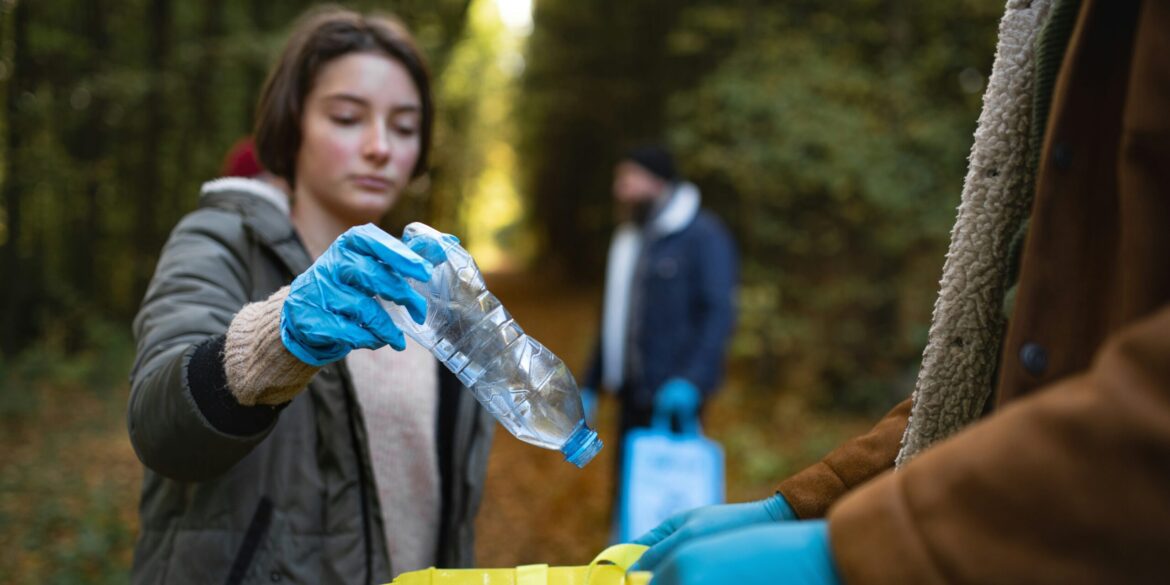On September 5, 2025, researchers at the University of Copenhagen unveiled a scientific breakthrough that could significantly reshape how the world addresses two of its most pressing environmental challenges—plastic waste and climate change. The team introduced a new material, dubbed BAETA, which is synthesized entirely from recycled PET plastic bottles and has shown strong potential to capture carbon dioxide directly from the air.
The innovation represents a compelling convergence of chemistry, environmental science, and circular economy principles. BAETA, which appears in the form of a powder or tiny plastic pellets, is engineered to bind with CO₂ molecules in the atmosphere, effectively removing greenhouse gases while simultaneously upcycling plastic waste that might otherwise end up in oceans or landfills. The announcement was accompanied by a peer-reviewed study published in the journal Science Advances, and has since drawn widespread attention from the scientific community and sustainability advocates alike.
The research, led by PhD candidate Margarita Poderyte, offers a unique approach to carbon capture by tackling the problem upstream—starting with a waste product that already presents a global environmental crisis. Poderyte emphasized that the innovation not only avoids creating new environmental burdens but transforms existing ones into solutions. “We are taking something that has been widely viewed as an ecological problem—waste plastic—and reimagining it as part of the climate solution,” she said in a public statement.
BAETA is constructed through a relatively simple and energy-efficient process. Unlike many traditional carbon-capturing materials that require high temperatures or extensive chemical treatments to produce, BAETA can be synthesized at ambient temperatures. This simplicity in production not only lowers costs but makes the technology accessible for rapid industrial scaling. The material is designed to function efficiently across a wide temperature range, particularly in environments with moderate to high heat, such as the exhaust systems of power plants or manufacturing facilities. Once the material captures CO₂, it can be regenerated through heating, releasing the gas for safe storage or reuse while allowing the BAETA to be used again.
Associate Professor Ji-Woong Lee, a co-author of the study, highlighted the material’s durability and adaptability, noting that it can maintain performance over extended use cycles without significant degradation. This trait is crucial for commercial and industrial viability, where operational consistency and low maintenance are essential.
Early experiments with BAETA suggest that its carbon capture efficiency is competitive with existing commercial technologies. While precise capture rates and energy savings are still under review, the initial findings have prompted significant interest from environmental engineers and climate-focused entrepreneurs. The research team is already exploring ways to scale production, with the goal of reaching industrial quantities in the near future. Investors and government agencies focused on decarbonization initiatives are expected to take a keen interest in the material, given its low production costs and dual benefit of waste remediation and carbon removal.
The potential environmental benefits of BAETA extend beyond climate mitigation. One of the most promising aspects of the material is its use of post-consumer PET plastic, which comprises a significant portion of global plastic waste. The same types of bottles used for soft drinks, bottled water, and various household products can now serve as raw material for a substance that helps clean the atmosphere. This application could drive a shift in how recycling is approached, adding commercial value to plastic waste streams that are often ignored or poorly managed.
Moreover, the researchers believe that BAETA can even be made from degraded plastics collected from marine environments, opening the door to ocean clean-up efforts that yield not just cleaner waters, but also climate benefits. By making use of otherwise useless or highly contaminated plastic waste, BAETA sidesteps many of the challenges that plague traditional recycling, which often requires high purity and quality standards.
As the world intensifies its search for scalable, cost-effective carbon capture solutions, BAETA represents a timely and hopeful development. It showcases the power of chemistry and material science to address intertwined global issues through interdisciplinary innovation. More importantly, it reflects a growing trend in environmental research that prioritizes holistic approaches—solutions that tackle multiple problems simultaneously, rather than in isolation.
The University of Copenhagen’s work with BAETA is likely to inspire similar research initiatives across the globe. It also aligns with broader sustainability goals being pursued by European Union nations, which have pledged to reduce net greenhouse gas emissions to zero by mid-century. Technologies like BAETA, which support both climate action and waste reduction, are critical to meeting such ambitious targets.
While further testing and scale-up efforts remain ahead, BAETA stands as a vivid example of how waste can be repurposed into a force for environmental good. With scientific ingenuity and industrial collaboration, plastic bottles that once choked landfills and oceans may soon become tools in the fight against climate change.

